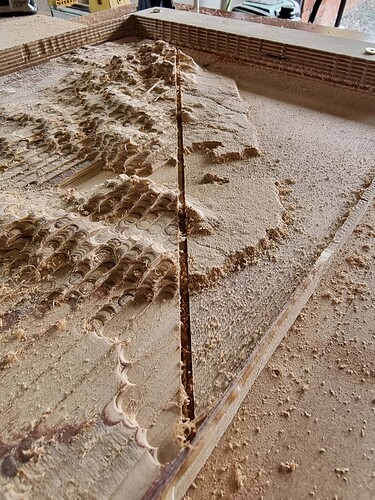Thanks for the update and info, Peter.
Helpful insights about sources of error. In the present case, I am just considering closed-loop to prevent missed steps, not necessarily to improve accuracy, which is already very good. I like the idea of just getting a stronger stepper motor and a Trinamic driver that can detect skipped steps and hit the pause button for me. And a “rumble sensor” is a great idea.
Thanks for the problem-solving and ideas, Ryan. I already put a lower-pitch lead screw on (1-start, 2mm per rev), to prevent the heavy spindle from falling when the stepper power is off. I like that pitch and want to keep it. I think the reason I am skipping steps sometimes is just down to the sheer weight and inertia of the spindle (1.5kW water-cooled, weighs about 10 pounds) and the specific shapes I am carving. It is definitely harder to manually screw it in the up direction than down, using my fingers on the coupler.
Although it is warmer than usual here in Ireland, I have a water-cooled heatsink on the Z motor that keeps it below 30C, and a fan on the stepper driver that keeps the IC in it at 53C or less. (would an overheated stepper driver cause skipped steps?)
I had just cleaned off and re-greased the leadscrew before my most recent fail (see photo below), and checked that all the Z axis rails/bearings are sliding freely without slop or binding. I have done a fair bit of tweaking of the relevant variables to optimize speed and torque for all three axes:
-microsteps
-stepper driver current setting
-max speed setting in grbl
-acceleration setting in grbl
(and upped voltage to 40V, and increased max pulse rate dramatically by going to the Teensy controller.)
I am often pushing everything close to the limit.
Here is what lost Z steps look like. I also heard a difference in the sound, due to the finishing bit carving a suddenly deeper cut. But because I had not been vacuuming up the dust, it took me about 4 passes to cop on that there was a serious problem.
More smart ideas about smarts, please!
